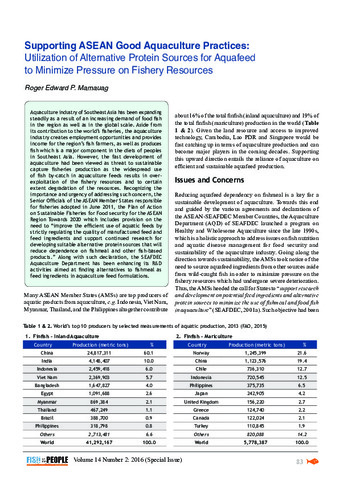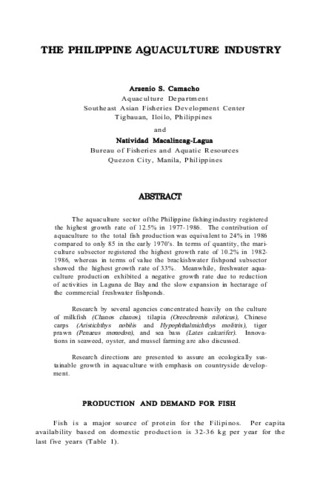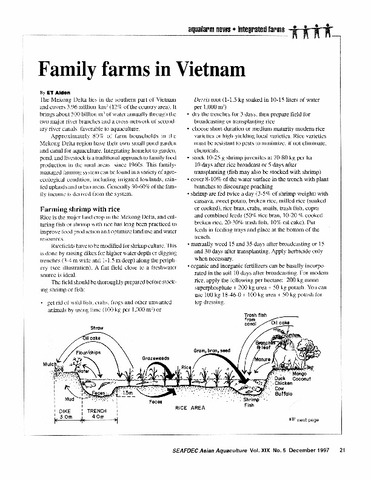Supporting ASEAN good aquaculture practices: Utilization of alternative protein sources for aquafeed to minimize pressure on fishery resources
- Global styles
- MLA
- Vancouver
- Elsevier - Harvard
- APA
- Help

View/
Date
2016Author
Page views
3,975ASFA keyword
AGROVOC keyword
Metadata
Perlihat publikasi penuh
Share
Abstract
Aquaculture industry of Southeast Asia has been expanding steadily as a result of an increasing demand of food fish in the region as well as in the global scale. Aside from its contribution to the world’s fisheries, the aquaculture industry creates employment opportunities and provides income for the region’s fish farmers, as well as produces fish which is a major component in the diets of peoples in Southeast Asia. However, the fast development of aquaculture had been viewed as threat to sustainable capture fisheries production as the widespread use of fish by-catch in aquaculture feeds results in overexploitation of the fishery resources and to certain extent degradation of the resources. Recognizing the importance and urgency of addressing such concern, the Senior Officials of the ASEAN Member States responsible for fisheries adopted in June 2011, the Plan of Action on Sustainable Fisheries for Food security for the ASEAN Region Towards 2020 which includes provision on the need to “improve the efficient use of aquatic feeds by strictly regulating the quality of manufactured feed and feed ingredients and support continued research for developing suitable alternative protein sources that will reduce dependence on fishmeal and other fish-based products.” Along with such declaration, the SEAFDEC Aquaculture Department has been enhancing its R&D activities aimed at finding alternatives to fishmeal as feed ingredients in aquaculture feed formulations.
Suggested Citation
Mamauag, R. E. (2016). Supporting ASEAN good aquaculture practices: Utilization of alternative protein sources for aquafeed to minimize pressure on fishery resources. Fish for the People , 14(2), 83-89. http://hdl.handle.net/20.500.12066/390
Type
magazineArticleISSN
1685-6546Koleksi
- Fish for the People [41]
Related items
Showing items related by title, author, creator and subject.
-
The Philippine aquaculture industry
Camacho, Arsenio S.; Macalincag-Lagua, Natividad (Aquaculture Department, Southeast Asian Fisheries Development Center, 1988)The aquaculture sector of the Philippine fishing industry registered the highest growth rate of 12.5% in 1977-1986. The contribution of aquaculture to the total fish production was equivalent to 24% in 1986 compared to ... -
Family farms in Vietnam
Aldon, Eva T. (Aquaculture Department, Southeast Asian Fisheries Development Center, 1997) -
Nursery and grow-out operation and management of Penaeus monodon (Fabricius)
Corre, Kaylin G. (Aquaculture Department, Southeast Asian Fisheries Development Center, 1988)The results of research on nursery and grow-out rearing of prawn conducted by the SEAFDEC Aquaculture Department for over a decade are reviewed. Different rearing facilities designed to accommodate hatchery-produced prawn ...






